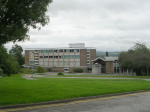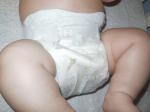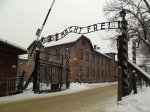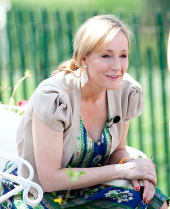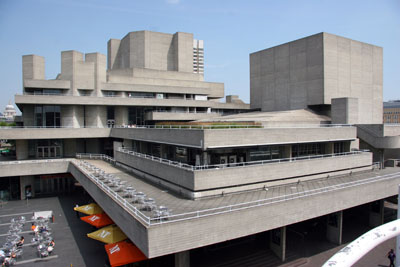Britain should invest in culture to help economic recovery, says an alliance of arts leaders including the National Theatre artistic director, Sir Nicholas Hytner, and Neil MacGregor, director of the British Museum.
Speaking at today's launch of the arts manifesto Cultural Capital, MacGregor said: "We want to give politicians the confidence to put on their CVs not what football team they support, but why life without Schubert is impossible.
"Culture works. This is a bit of national life that is extraordinarily efficient and effective. It is a huge employer and the economic activity it generates is ever more important … Culture gives us our place in the world; it reminds us what we are and what we could be."
Alan Davey, the chief executive of Arts Council England, said the arts should not be immune from pressure to give value for money. But he said: "Every day public money is combined with private funds to produce miracles on a shoestring.
"The cost to the public is less than the cost of half a pint of milk. We need to cherish it and not spill it. It shouldn't be thrown away in a fit of absentmindedness."
The alliance argued that the arts were a growth industry that could have a major impact on the economy with the help of a minimal but crucial public investment. They were also crucial to the life of the nation as a whole, and the way it was seen overseas.
The launch, at the British Museum, was accompanied by the brandishing of a variety of placards bearing the slogan "You can bank on culture", designed by Damien Hirst, Tracey Emin, Anish Kapoor and Michael Craig-Martin – a sly reference to the modest public sums spent on the arts and culture compared with the amount poured into banking.
Hytner said the arts were in excellent health because of 15 years of public support which began under the Conservatives, with the creation of the National Lottery by John Major. It then continued with over a decade of sustained funding from the Labour government.
Hytner praised the British model of arts funding, which has traditionally relied on a mixture of public and private money and a lack of direct political interference.
He said: "In theatre, it goes back to the Elizabethan model, where work was dependent on income from the box office, sustained by an interest by the Crown, as it was then, and supported by a healthy dollop of private patronage. This model continues to help us take risks that we wouldn't otherwise be able to entertain.
"The National Theatre's production of War Horse, which is generating a great deal of revenue for both us and the private sector, would have been impossible without sustained investment allowing us to create it over the course of 18 months of workshops."
The West End and Broadway, he said, were dominated by plays created with the help of public investment in Britain's subsidised theatres. The argument for continued investment was being made "because the return we give on a tiny investment is worth looking at. We have no sense of entitlement".
The group praised a gradually increased engagement with culture by politicians: "I don't think I remember hearing such a mature conversation from all three parties," said Jude Kelly, artistic director of Southbank Centre in London.
But they also said that British politicians had on the whole been reticent about talking about British arts and culture. According to MacGregor: "There has been a slowness to understand how important arts and culture are in every part of life, in reshaping society, and in people's personal and imaginative fulfillment."
According to the Cultural Capital manifesto, Britain has five of the 20 most visited museums in the world (more than France or the US). The authors write: "The economic benefits of the UK's major museums and galleries alone are estimated to be £1.5bn per annum."
Music contributes nearly £5bn to the UK economy and the economic impact of theatre is £2.6bn a year. When Liverpool was European capital of culture in 2008, £800m was generated for the local economy and 27% more visitors were attracted than in previous years.
telegraph.co.uk
"Culture works. This is a bit of national life that is extraordinarily efficient and effective. It is a huge employer and the economic activity it generates is ever more important … Culture gives us our place in the world; it reminds us what we are and what we could be."
Alan Davey, the chief executive of Arts Council England, said the arts should not be immune from pressure to give value for money. But he said: "Every day public money is combined with private funds to produce miracles on a shoestring.
"The cost to the public is less than the cost of half a pint of milk. We need to cherish it and not spill it. It shouldn't be thrown away in a fit of absentmindedness."
The alliance argued that the arts were a growth industry that could have a major impact on the economy with the help of a minimal but crucial public investment. They were also crucial to the life of the nation as a whole, and the way it was seen overseas.
The launch, at the British Museum, was accompanied by the brandishing of a variety of placards bearing the slogan "You can bank on culture", designed by Damien Hirst, Tracey Emin, Anish Kapoor and Michael Craig-Martin – a sly reference to the modest public sums spent on the arts and culture compared with the amount poured into banking.
Hytner said the arts were in excellent health because of 15 years of public support which began under the Conservatives, with the creation of the National Lottery by John Major. It then continued with over a decade of sustained funding from the Labour government.
Hytner praised the British model of arts funding, which has traditionally relied on a mixture of public and private money and a lack of direct political interference.
He said: "In theatre, it goes back to the Elizabethan model, where work was dependent on income from the box office, sustained by an interest by the Crown, as it was then, and supported by a healthy dollop of private patronage. This model continues to help us take risks that we wouldn't otherwise be able to entertain.
"The National Theatre's production of War Horse, which is generating a great deal of revenue for both us and the private sector, would have been impossible without sustained investment allowing us to create it over the course of 18 months of workshops."
The West End and Broadway, he said, were dominated by plays created with the help of public investment in Britain's subsidised theatres. The argument for continued investment was being made "because the return we give on a tiny investment is worth looking at. We have no sense of entitlement".
The group praised a gradually increased engagement with culture by politicians: "I don't think I remember hearing such a mature conversation from all three parties," said Jude Kelly, artistic director of Southbank Centre in London.
But they also said that British politicians had on the whole been reticent about talking about British arts and culture. According to MacGregor: "There has been a slowness to understand how important arts and culture are in every part of life, in reshaping society, and in people's personal and imaginative fulfillment."
According to the Cultural Capital manifesto, Britain has five of the 20 most visited museums in the world (more than France or the US). The authors write: "The economic benefits of the UK's major museums and galleries alone are estimated to be £1.5bn per annum."
Music contributes nearly £5bn to the UK economy and the economic impact of theatre is £2.6bn a year. When Liverpool was European capital of culture in 2008, £800m was generated for the local economy and 27% more visitors were attracted than in previous years.
telegraph.co.uk











